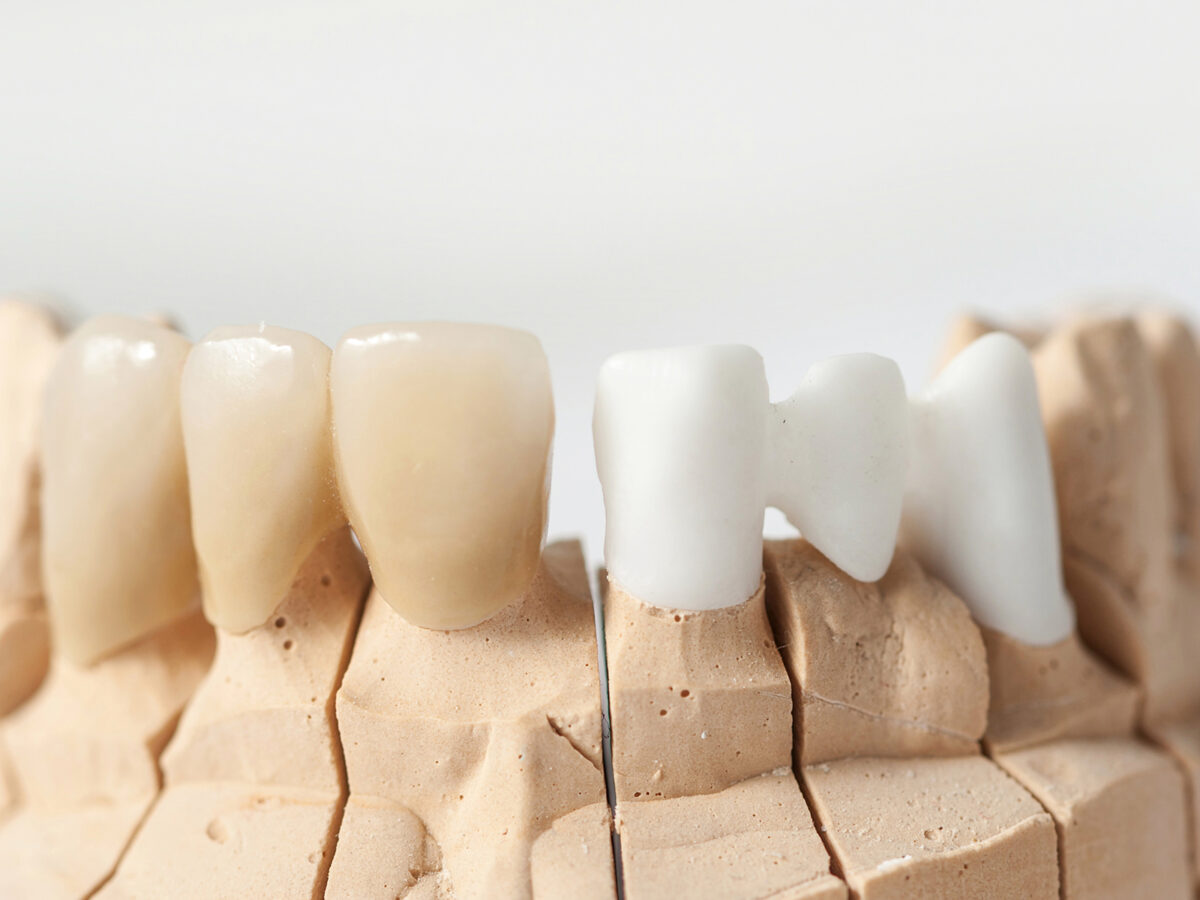Blog
Dental hygiene tips for healthy teeth & gums

How Can Dental Bridges Help In Oral Health Restoration?
Our oral health is crucial to our overall health, and losing one or more teeth can significantly affect appearance and functionality. By bridging the gaps caused by losing teeth, dental bridges provide a dependable answer for regaining oral health. This article will examine the many types of dental bridges, their function, and their advantages for improving oral health.
Dental Bridges Help In Oral Health Restoration
Dental bridges are fixed prosthetic devices that replace one or more lost teeth. Pontics, synthetic teeth, are used in this procedure, and they are secured in place by being fastened to nearby dental implants or natural teeth. Dental bridges are a seamless and natural-looking repair because they are manufactured to match the neighboring teeth’ color, shape, and size.
Types of Dental Bridges
a) Traditional Dental Bridges: This form of dental bridge is the most popular and consists of pontics supported by dental crowns bonded to the neighboring natural teeth. The crowns serve as abutments and give the bridge support.
b) Cantilever dental bridges: These are utilized when only one adjacent tooth can serve as a support. One abutment tooth serves as the pontic’s dental crown.
c) Maryland dental bridges, also called resin-bonded bridges, use a metal or porcelain framework glued to the backs of neighboring teeth. Since the bite force on the front teeth is lighter, this bridge is perfect for replacing them.
c) Implant-Supported Dental Bridges: For those with no natural teeth remaining or with several missing teeth, implant-supported bridges are an option. They entail placing dental implants in the jawbone to fix the bridge firmly.
How can Dental Bridges aid in oral health?
Dental bridges help restore oral health by improving chewing and speaking. Missing teeth can make it difficult to chew food, which can cause digestive problems and poor nutrition properly.
a) Dental bridges provide a balanced and nutrient-rich diet by restoring the ability to bite and chew properly. In addition, they aid in preserving speech clarity and avert speech impairments that may result from tooth loss.
b) Maintenance of Facial Structure: When a tooth is lost, the jawbone beneath it may start to degrade, giving the face a sunken appearance and hastening the aging process. By stimulating the surrounding bone and avoiding bone loss, dental bridges aid in maintaining the contour and integrity of the face structure.
c) Dental misalignment and bite issues can develop from gaps left by missing teeth, which can cause the remaining teeth to shift out of place. By filling the voids, dental bridges stop teeth from slipping and restore appropriate dental alignment. Preserving a balanced bite lowers the incidence of TMJ disorders, headaches, and jaw pain.
d) Improved Aesthetics: Dental bridges improve the smile’s appearance while restoring function. They offer a smooth and natural-looking restoration since they are made to seem like natural teeth in terms of color, shape, and size. As a result, people become more confident and feel better about themselves, making it easier to smile and engage with others.
e) Simple Maintenance: Dental bridges are simple to maintain with regular oral hygiene procedures. The durability and health of the bridge depend on brushing, flossing, and routine dental exams. Your dentist will give specific recommendations on regular maintenance.
Conclusion
Dental bridges are an efficient way to restore oral health and function in cases of tooth loss. They have many advantages, including better speech and chewing, preservation of face structure, protection of dental alignment, increased aesthetics, and simplicity of maintenance. A dental expert can help you decide if dental bridges are the best option if you have lost teeth. Dental bridges can considerably enhance your quality of life and restore your self-confidence by restoring your smile and oral health.
